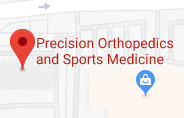Golfer’s Elbow
Introduction
Golfer’s elbow, also called Medial Epicondylitis, is a painful condition occurring from repeated muscle contractions in the forearm that leads to inflammation and micro tears in the tendons that attach to the medial epicondyle. The medial epicondyle is the bony prominence that is felt on the inside of the elbow.
Golfer’s elbow and Tennis Elbow are similar except that Golfer’s elbow occurs on the inside of the elbow and Tennis Elbow occurs on the outside of the elbow. Both conditions are a type of Tendonitis which literally means “inflammation of the tendons”.
Signs and symptoms
Signs and symptoms of Golfer’s Elbow can include the following:
- Elbow pain that appears suddenly or gradually
- Achy pain to the inner side of the elbow during activity
- Elbow stiffness with decreased range of motion
- Pain may radiate to the inner forearm, hand or wrist
- Weakened grip
- Pain worsens with gripping objects
- Pain is exacerbated in the elbow when the wrist is flexed or bent forward toward the forearm
Causes
Golfer’s Elbow is usually caused by overuse of the forearm muscles and tendons that control wrist and finger movement but may also be caused by direct trauma such as with a fall, car accident, or work injury.
Golfer’s elbow is commonly seen in golfer’s, hence the name, especially when poor technique or unsuitable equipment is used when hitting the ball. Other common causes include any activity that requires repetitive motion of the forearm such as: painting, hammering, typing, raking, pitching sports, gardening, shoveling, fencing, and playing golf.
Diagnosis
Golfer’s Elbow should be evaluated by an Orthopaedic specialist for proper diagnosis and treatment.
- Medical History
- Physical Examination
- Your physician may order an x-ray to rule out a fracture or arthritis as the cause of your pain.
- Occasionally, if the diagnosis is unclear, your physician may order further tests to confirm golfer’s elbow such as MRI, ultrasonography, and injection test
Conservative Treatment Options
Your physician will recommend conservative treatment options to treat the symptoms associated with Golfer’s Elbow. These may include the following:
- Activity Restrictions: Limit use and rest the arm from activities that worsen symptoms
- Orthotics: Splints or braces may be ordered to decrease stress on the injured tissues
- Ice: Ice packs applied to the injury will help diminish swelling and pain. Ice should be applied over a towel to the affected area for 20 minutes four times a day for a couple days. Never place ice directly over the skin
- Medications: Anti-inflammatory medications and/or steroid injections may be ordered to treat the pain and swelling
- Occupational Therapy: OT may be ordered for strengthening and stretching exercises to the forearm once your symptoms have decreased
- Pulsed Ultrasound: A non-invasive treatment used by therapists to break up scar tissue and increase blood flow to the injured tendons to promote healing
- Professional instruction: Consulting with a sports professional to assess and instruct in proper swing technique and appropriate equipment may be recommended to prevent recurrence
Surgery
If conservative treatment options fail to resolve the condition and symptoms persist for 6 -12 months, your surgeon may recommend surgery to treat Golfers Elbow. The goal of surgery to treat Golfers Elbow is to remove the diseased tissue around the inner elbow, improve blood supply to the area to promote healing, and alleviate the patient’s symptoms.
2120 N. MacArthur Blvd
Suite 100
Irving, TX 75061
 Ph: (972) 438 4636
Ph: (972) 438 4636
 Fax:
(972) 438 2077
Fax:
(972) 438 2077

 Make an Appointment Online
Make an Appointment Online

 Shoulder
Shoulder Elbow
Elbow Wrist
Wrist Hand
Hand Patient Education
Patient Education Testimonials
Testimonials Map
& Location
Map
& Location Patient Forms
Patient Forms






